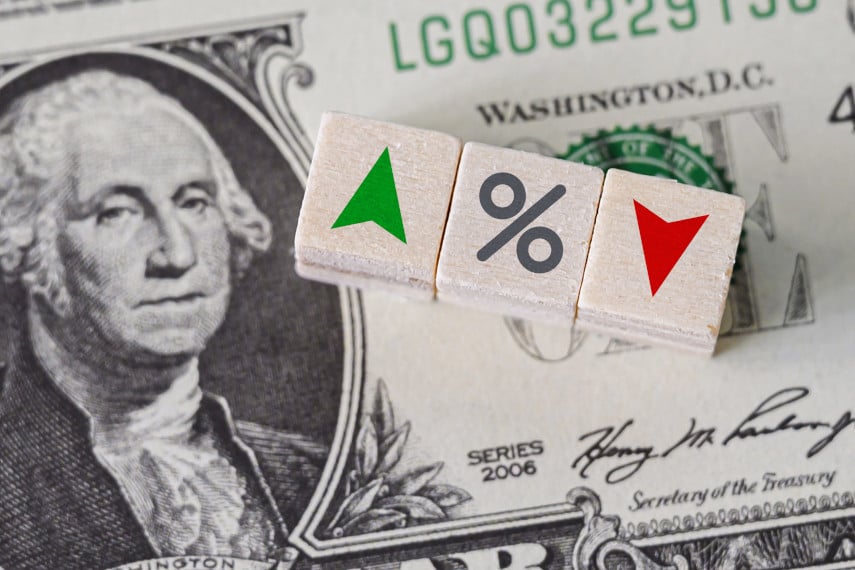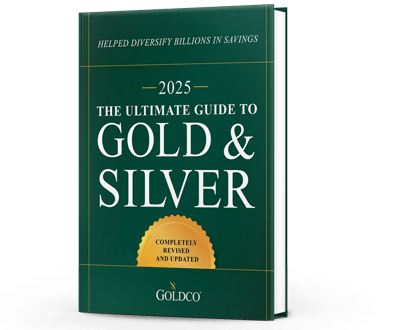Will the Fed Continue Cutting Interest Rates?
With the recent unease in financial markets, one question that has been on many people’s minds is: what will the Federal Reserve do with interest rates The Fed has paused its interest rate cuts...
Federal Reserve

While markets largely expected a first Federal Reserve rate cut at the September Federal Open Market Committee (FOMC) meeting, Fed Chairman Jerome Powell made it all but explicit last week that the FOMC will recommend a rate cut in September.
Speaking at the Kansas City Fed’s annual Jackson Hole symposium, Powell stated: “The time has come for policy to adjust. The direction of travel is clear, and the timing and pace of rate cuts will depend on incoming data, the evolving outlook, and the balance of risks.”
In other words, a September rate cut is all but certain, the only question is how much the Fed will cut rates. But in forecasting his actions so far in advance (nearly one month), Powell is taking some big risks.
On the one hand, Powell’s comments are in keeping with the thinking of his immediate predecessors, who sought to assuage markets and keep them in the loop with regard to what the Fed was doing.
Fed Chairmen know that their words and actions move markets, so the more prepared markets are for those actions, the smoother should be the result once the Fed acts, at least in theory.
But on the other hand, by telegraphing his intentions so far in advance, there is a great risk that markets will already price in the Fed’s actions by the time mid-September rolls around, so that the actual rate cut won’t do much to move markets.
It might then seem like the Fed’s rate cut is actually a dud, and could lead to growing pressure to cut rates further.
Stock markets certainly reacted happily to Powell’s comments, with markets having gone on a tear this week. But how about bond markets?
Yields on 6-month T-Bills have fallen about 20 basis points over the course of the month, while most other short-term T-Bills have fallen by around 15 basis points.
If the Fed decides on a 25 basis point cut next month, that means that bond markets have already priced in most of that rate cut already, so the impact on bond markets come September may very well be minimal, unless the Fed decides to shake things up and make a 50 basis point cut.
But this telegraphing of intentions could end up backfiring. What happens if next month’s inflation report shows that inflation jumps back up to 3.3%?
That would make it more difficult to cut rates, and might cause the Fed to postpone a cut until the next meeting in November. But how would markets react?
Since markets are already starting to price in the effects of a September rate cut, a failure to do so could see a spike in interest rates if a rate cut doesn’t materialize the way markets expect it to.
We saw similar behavior last year, as bond yields started to drop in anticipation of a Fed rate cut this spring. But once the likelihood of that rate cut evaporated, bond yields rose back to their previous levels.
Powell and Fed policymakers are playing with fire when they start attempting to game markets by forecasting their moves. There is still a lot that can happen over the next month, and while there is a greater likelihood that the Fed will cut rates than that it will not, it’s still too soon to say with certainty what the Fed will, could, or should do.
The risk the Fed runs is that it may box itself in and have to do something different as economic conditions change. If that happens, then the Fed risks its credibility, and anything Powell says from here on out will have to be taken with a mighty big grain of salt.
Let’s hope for the sake of the economy that Powell hasn’t talked himself into a corner, and that his attempt to keep markets informed of Fed actions doesn’t end up backfiring on him.
If you remember the decade after the 2008 crisis, it was marked by historically low interest rates, held near zero for longer than had ever been done before. And there was even discussion of negative interest rates, which did in fact occur in Europe and Japan.
For the past several years American savers have benefited from normalized interest rates, with returns on T-Bills, high yield savings accounts, and money market accounts actually outpacing official inflation rates for once.
But once the Fed starts cutting rates, those less risky assets are going to start looking less enticing. And Americans who want to stay ahead of the curve are going to have to start thinking about how they’re going to react when, and ideally before, the Fed starts cutting interest rates.
One way that many Americans have decided to start safeguarding themselves is by buying gold. Gold has long served as a safe haven and store of value, and it’s one of the first save havens that people turn towards when times get tough.
Gold has set numerous all-time highs recently as safe haven demand has continued to strengthen, buoyed by fears of recession. And with Fed rate cuts in 2001 and 2007 having come at the start of recessions, there’s a good chance that the Fed’s next rate cut could also presage the next recession.
If you want to put gold to work for you in helping protect your hard-earned money, now is the time to start thinking about how to do it. Whether you’re looking at a direct cash purchase of gold coins to store at home, or rolling over 401(k) assets into a gold IRA, there are numerous ways to benefit from owning gold.
For over a decade Goldco has been committed to helping Americans from all walks of life benefit from owning gold. Whether you’re a first time gold buyer or you’ve been putting away gold for years, Goldco has gold coins and gold bars that can fit your needs.
If you’re looking ahead to when the Fed cuts rates and are considering using gold to help protect yourself, now is the time to start thinking about it. Call Goldco today to learn more about how gold can help safeguard your financial future.

